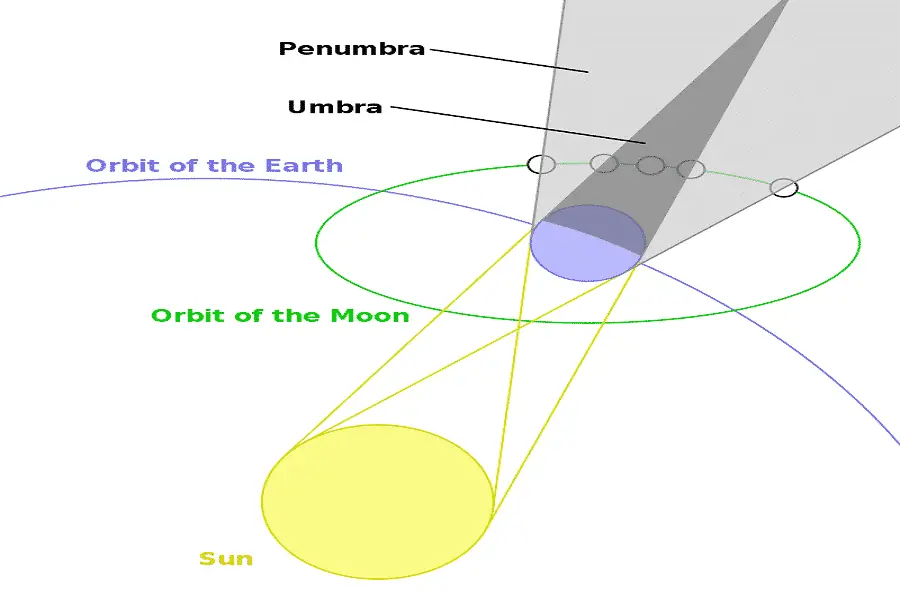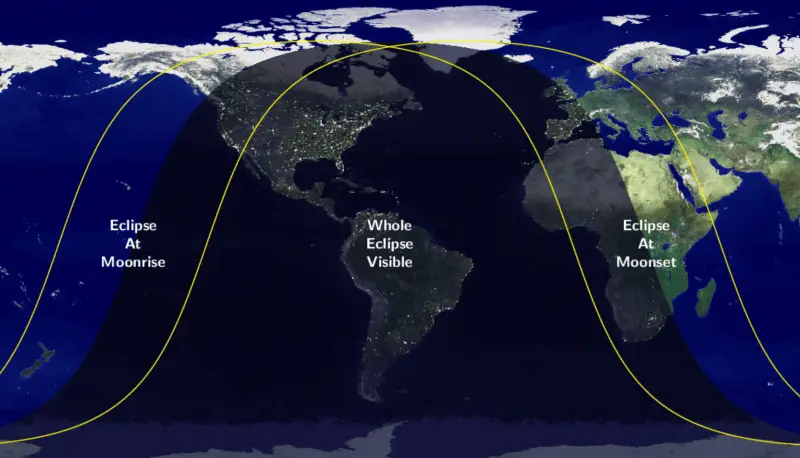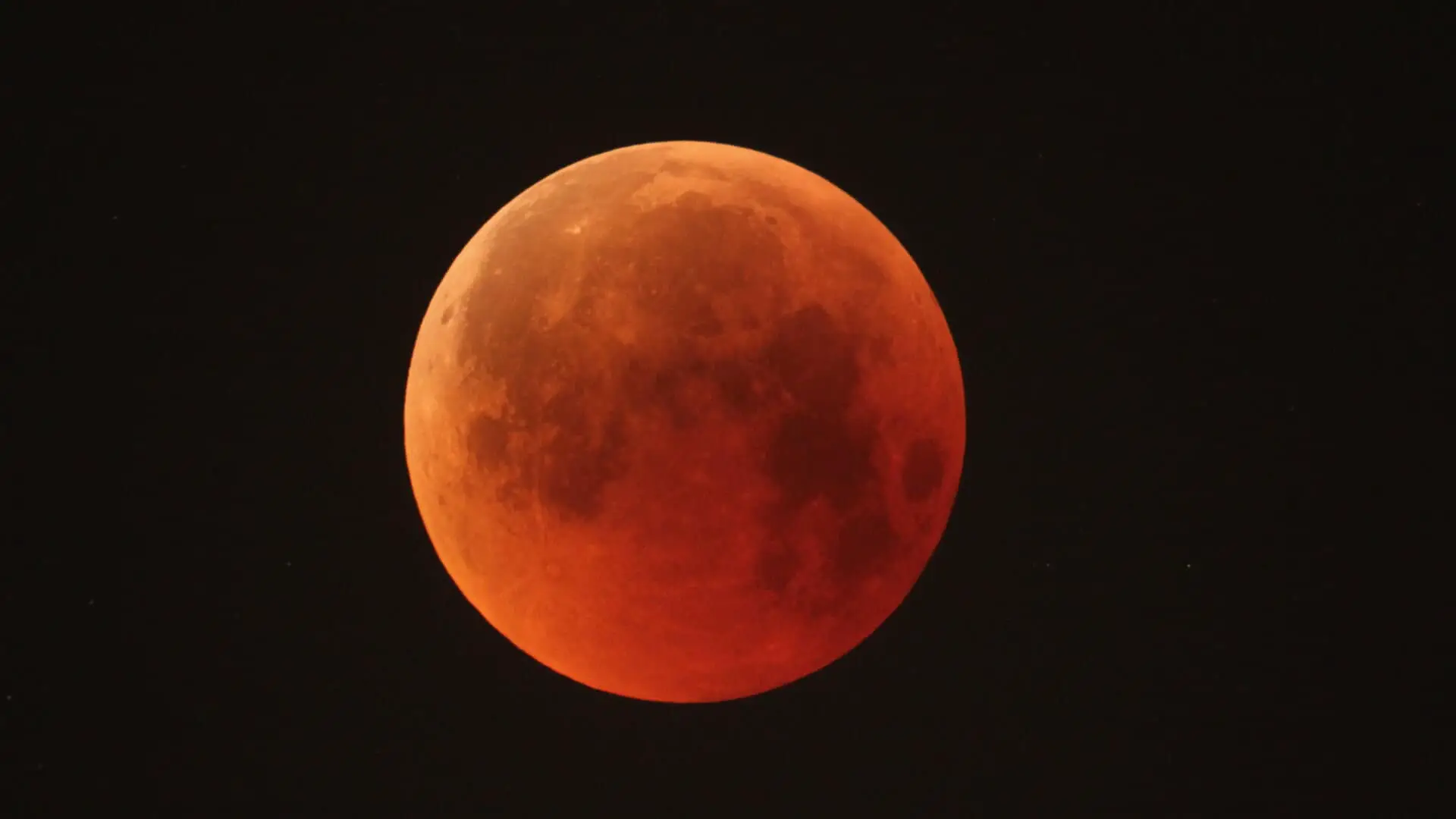The next, as well as the first lunar eclipse of 2022, will occur on Monday, May 16 which will be coinciding with the Full Flower Moon. Okay, for the people living in the northern hemisphere, it will be a flower moon. Conversely, for the people living in the southern hemisphere, the full moon in May is known as Beaver Moon.
Not to mention, this eclipse will also be a total lunar eclipse of the moon. It will be visible from some places, and from some, it won’t. WHY? Well, don’t worry, we will talk about this in the later section.
But, before going ahead, let me give a short and crisp review of the definition of the lunar eclipse and, of course, its type too. I mean, I just want you to know why this eclipse of the moon is a total lunar eclipse, why not the partial or penumbral lunar eclipse!
Lunar Eclipse Definition
A lunar eclipse occurs when these two principal criteria are fulfilled.
- First, only on a full moon day, a lunar eclipse can occur. Thankfully, May 16 is a full moon day. So, we are safe here.
- Second, a lunar eclipse occurs when the earth comes between the moon and the sun. In other words, an eclipse of the moon occurs when the earth’s shadow partially or completely blocks the sunlight from falling on the surface of the moon.
In fact, the second criteria i.e the earth’s shadow plays a decisive role in the fact that whether the eclipse of the moon is total, partial, or, the penumbral one. Let me explain…!!!
Game of Shadows

For starters, a shadow can be divided into three parts i.e Umbra, Penumbra, and Autumbra. However, because of the demand for the topic, right now, we are only interested in the first two. (Refer to the above image for proper understanding).
An umbra is the innermost part of the shadow, where the light source(sunlight) is completely blocked by the opaque body (earth). In layman, you can say that the umbra is nothing but the darkest part of the shadow.
Conversely, a penumbra is the outer part of the shadow, where the light source is not blocked but only obscured by the opaque body. In layman, you can say that the penumbra is nothing but the lightest part of the shadow.
Types of Lunar Eclipse

Taking into consideration the game of shadows, there are generally three types of lunar eclipses. These are the penumbral lunar eclipse, total lunar eclipse, and partial lunar eclipse. (Refer to the above image for proper understanding).
- A penumbral lunar eclipse occurs when the moon passes through the earth’s penumbra.
- A partial lunar eclipse occurs when the moon partially passes through the earth’s umbra.
- Similarly, a total lunar eclipse occurs when the moon completely passes through the earth’s umbra.
I hope now you know why this eclipse of the moon is a total lunar eclipse. Because during the first lunar eclipse of 2022, the moon will completely pass through the earth’s umbra i.e the darkest part of the earth’s shadow.
When and Where to See Next Total Lunar Eclipse of 2022?
Just because of the fact that the earth is round, when half of the planet is living in the darkness, at the same time, the other half is enjoying the daylight.
Therefore, as a result of the earth’s curvature, of course, the earth’s tilt, this eclipse of the moon will be visible only from some specific countries.
Visibility Map of Total Lunar Eclipse of 2022 May 16

The visibility of the total lunar eclipse of 2022 May 16 will solely depend on the fact of where on the earth you reside. (Refer to the above image for proper understanding). This totality of the moon will be visible from North and South America.
In addition, it will also be seen rising over Northwest North America, and the Pacific Ocean, and setting over Africa, and Europe. In case you don’t know a solar and lunar eclipse always occur in pairs. A solar eclipse always occurs either before or two weeks after the occurrence of a lunar eclipse. Such that we had a partial solar eclipse on April 30, 2022.
Timing of Total Lunar Eclipse of May 16, 2022
According to timeanddate.com, on Monday, May 16, a penumbral lunar eclipse will begin at 01:32:05 UTC. After that, the partial lunar eclipse will begin at 02:27:52 UTC following the total lunar eclipse that will begin at 03:29:03 UTC and this totality of the moon will end sharply at 04:53:55 UTC.
Not to mention, the greatest eclipse will occur at 04:11:28 UTC which is between the start and the end of the total lunar eclipse. At last, the partial lunar eclipse will end at 05:55:07 UTC following the end of the penumbral lunar eclipse at 06:50:49 UTC. In order to understand it more clearly, refer to the table given below.
Eclipse Timing of Total Lunar Eclipse of 2022 May 16
| Eclipse Event | Time (UTC) | |
| 1. | Penumbral Lunar Eclipse begins | 16 May, 01:32:05 |
| 2. | Partial Lunar Eclipse begins | 16 May, 02:27:52 |
| 3. | Total Lunar Eclipse begins | 16 May, 03:29:03 |
| 4. | Greatest Eclipse begins | 16 May, 04:11:28 |
| 5. | Total Lunar Eclipse ends | 16 May, 04:53:55 |
| 6. | Partial Lunar Eclipse ends | 16 May, 05:55:07 |
| 7. | Penumbral Lunar Eclipse ends | 16 May, 06:50:49 |
Some Exclusive Facts About Total Lunar Eclipse of May 16, 2022
Here are some of the most important and exclusive characteristics facts about the upcoming total lunar eclipse of May 16, 2022.
- The eclipse magnitude (Umbral) is 1.4154.
- Penumbral Magnitude is 2.3726
- This eclipse of the moon belongs to Saros 131 Table and is number 34 of 72 eclipses in the series.
- On this day, the Moon is in the constellation Libra.
- For the Total Lunar Eclipse of 2022 on May 16, Gamma has a value of -0.2532.
- The overall duration of the eclipse is 5 hours and 19 minutes.
- The overall duration of the totality of the moon is 1 hour and 25 minutes.
- Duration of partiality of the moon is 2 hours and 2 minutes.
- The overall duration of the penumbral lunar eclipse is 1 hour and 51 minutes.
Editor’s Choice: Indeed, moon is moving away from earth, BUT WHY?
Safety Issue
Is it safe to look at the lunar eclipse without special glasses? Well, in my view, absolutely yes. It is perfectly safe to look directly at the lunar eclipse of 2022. I mean, there is no need for any protective eyewear or special eye covers to protect your eyes. Because the intensity of light during any type of lunar eclipse is very much less compared to the light emitted during the solar eclipse.
However, if you want to enhance the beauty of your majestic view, you can definitely use binoculars. At last, I wish you good luck with this epic moon gazing. And, do let me know about your astonishing experience in the comment section.
That’s it for this post. If you like this article, share it if you like, and like it if you share it. You can also find us on Mix, Twitter, Pinterest, and Facebook. Hey man, If you have come this far, do give us feedback in the comment section. It would make my day. You can also make a donation. Your donations will help us to run our website and serve you BETTER. Cheers!!!
